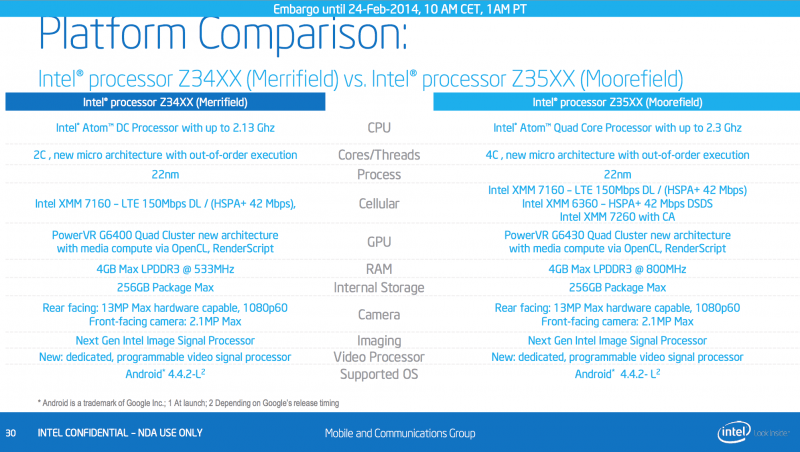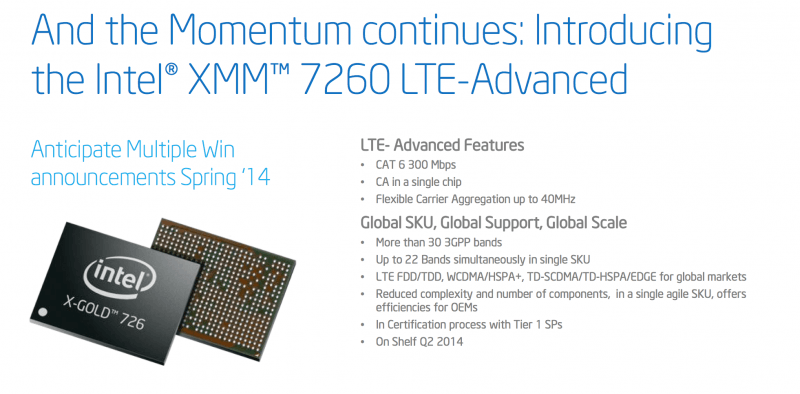It's not just Qualcomm detailing their latest efforts in the mobile SoC space today: Intel has also taken the time to talk about their new chips, 'Merrifield' and 'Moorefield', as well as their latest LTE modem. Intel isn't targeting the high-end with their new SoCs, instead looking to tackle the mid-range with silicon they're claiming is as powerful as some top ARM SoCs.
Merrifield is Intel's SoC for the first half of the year, packed with a dual-core 'Silvermont' CPU sharing 1 MB of L2 cache and a PowerVR G6400 GPU clocked at 533 MHz. There will be two Merrifield SoCs, the Atom Z3460 and Z3480, with a max CPU clock of 1.60 GHz and 2.13 GHz respectively.

Moorefield will be coming in the second half of 2014, and packs four Silvermont cores also sharing 1 MB of L2 cache, plus a beefier PowerVR G6430 GPU at 533 MHz. Again, Intel will push out two Moorefield chips, with max CPU clocks of 1.80 GHz and 2.33 GHz for the Atom Z3560 and Z3580 respectively.
Merrifield and Moorefield are very similar in other aspects too. Both SoCs are built on a 22nm process, are 64-bit capable, and support up to 4 GB of LPDDR3 at 533 MHz, 256 GB of internal storage, 13-megapixel rear cameras, 1080p60 video recording, and low-power sensor data monitoring. The chips currently support Android 4.4.2, and Intel says they will also support the upcoming L-release.
If priced correctly, Intel's new mobile SoCs will be quite competitive, especially if you go by Intel's included performance data. They claim the Merrifield Z3480 is faster than the Apple A7 and Qualcomm Snapdragon 800 in web applications, and close when it comes to OpenGL gaming. Intel also expects to be a leader when it comes to battery life and energy efficiency.

As well as Merrifield and Moorefield, Intel announced their second-generation multi-mode LTE modem, known as the XMM 7260. The modem supports Category 6 LTE (300 Mbps) and carrier aggregation, plus up to 22 simultaneous bands. With the XMM 7260, Intel hopes to be the number two player in the LTE space (behind Qualcomm) in 2014.
Towards the end of the year we can also look forward to Cherry Trail, the SoC successor to Bay Trail that we've seen in many Windows tablets as of late. SoFIA will also be coming in late 2014 as Intel's entry-level SoC with Silvermont cores.
https://www.techspot.com/news/55782-intel-details-mobile-atom-merrifield-and-moorefield-socs.html